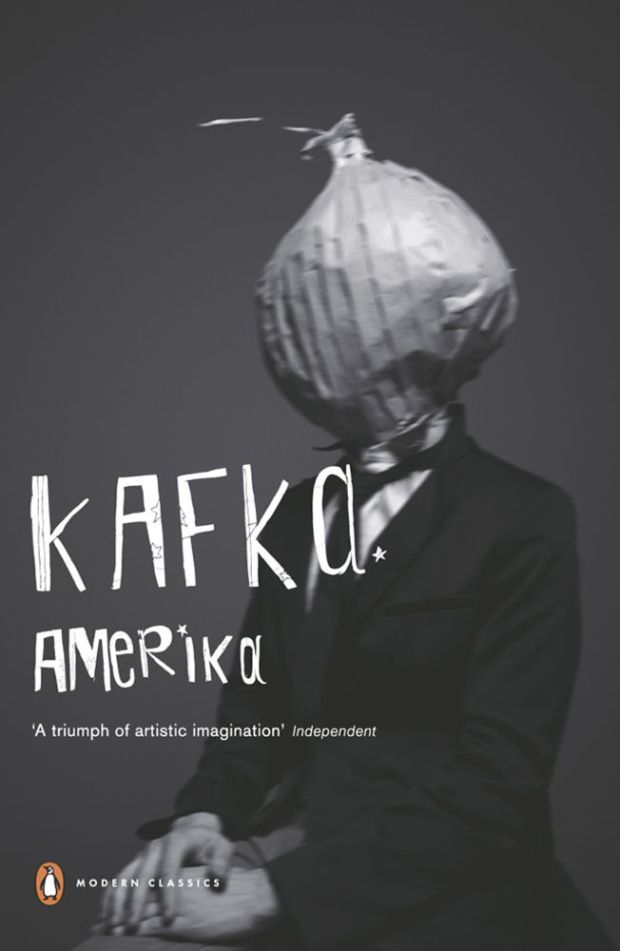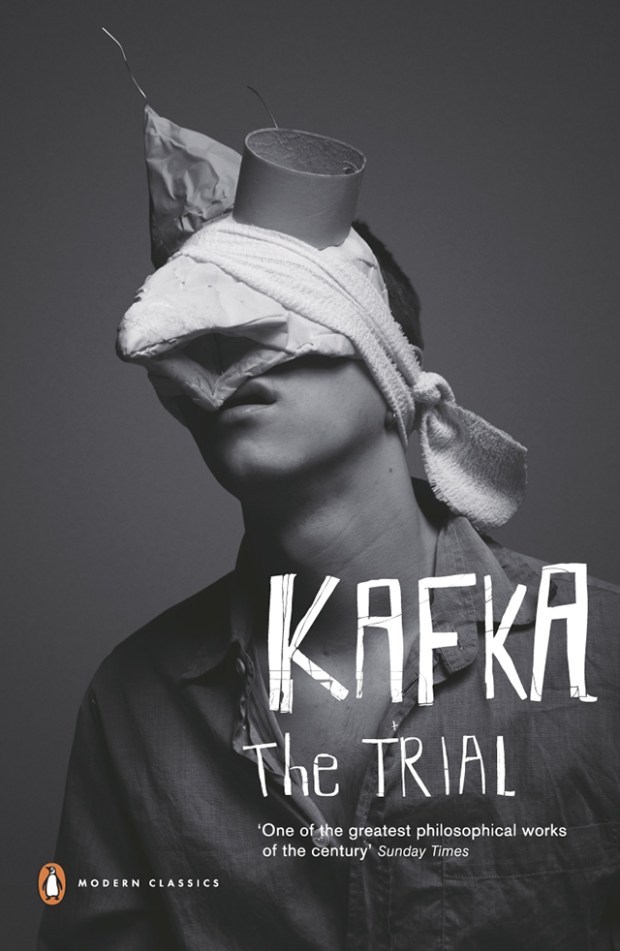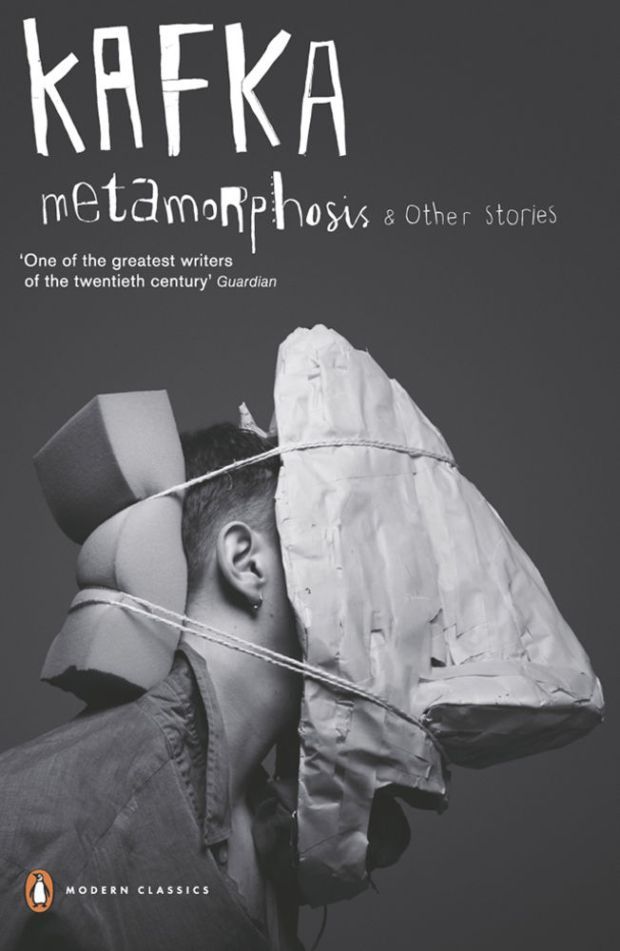#Jim Stoddart
Explore tagged Tumblr posts
Note
Hi there, I stumbled on a couple of your post regarding typesetting which I’m so grateful for. I was wondering if you’d share how you create your penguin classics covers?
Ofc yeah! So if you're wondering about the penguin classics covers specifically, then I just use this generator to make them. It's pretty easy, you type in the author + title and drop in the file image. But if you mean specifically the archive classics covers with the back and spine and al, then that's a bit more of complicated process. To make it easy and accurate, I download the custom cover template that lulu provides for the measurements. I ignore the safety margin, but everything else gets a guideline in InDesign.
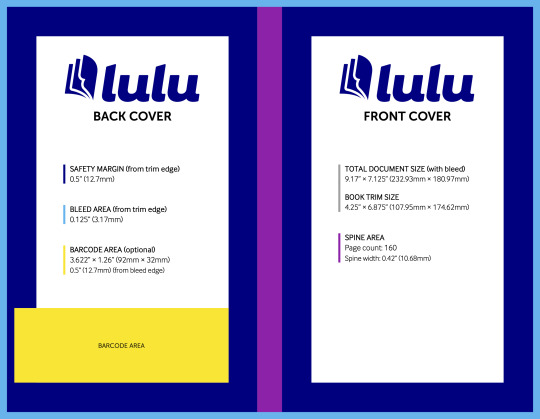
To make it penguin specific, I stared for a long time at my own penguin classics. And took measurements. But also, this website is very helpful: https://penguinseriesdesign.com. It's the Penguin Series Design, which goes through all of the different designs that Penguin had done for their covers over the years. This one specifically is for the Penguin classics. In the second link, they provide a link to Jim Stoddart's website, where he diagrams a cover he did for Penguin, and shows the grid, fonts, font sizes, and even CMYK color lol. Jim Stoddart, if you don't know, was the art director of Penguin who redid the covers for the Modern Penguin Classic look. If you want to get more into the specifics of the Penguin Design, Classic Penguin: Cover to Cover was very useful. The sans serif font is FuturaEF Book. The serif is Mrs. Eaves Roman. The glyph is a random one I chose from the font, Davys, which has the cutest glyphs btw. I chose this one because it kinda looks like Hermes to me. And then I usually pull the summary from ao3 or if there isn't one, write one myself. Or I'm feeling particularly lazy, and the ao3 summary is just a quote from the fic, I'll copy + paste that in as is. If the summary is short, I'll sometimes put in reviews from commenters. Ummm that's all I can think of for now, but if you have any more questions/want to know more/need clarification, feel absolutely free to hit me up!
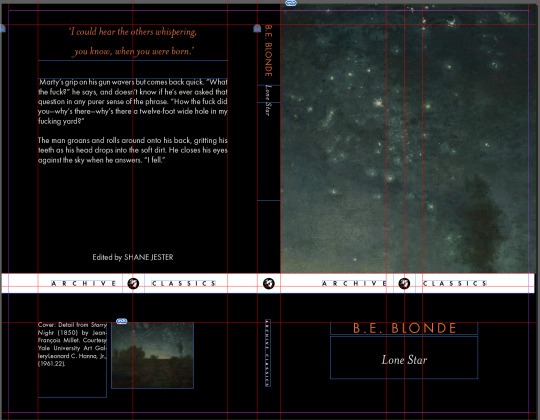
13 notes
·
View notes
Text
“Penguin Classics Sci-Fi”
Royaume-Unis, 2020, offset, 181 x 111 mm
La collection “Penguin Classics Sci-Fi” est une collection qui présente au public une série classique de la littérature internationale de science-fiction. Elle a été créée en 2020 au sein de la maison d’édition Penguin. Aujourd’hui, la collection compte 21 titres. Son directeur artistique est Jim Stoddart.

1 - Quelle lecture faites-vous du registre iconographique sélectionné pour cette collection ? En quoi vous semble-t-il pertinent dans un tel contexte ? Expliquez.
On peut voir que le registre iconographique est très important sur les couvertures. En effet, il prend une grande place dans cet espace, qui présente également le logo de la maison d’édition, le titre de l’ouvrage ainsi que celui de l’auteur. À travers l’histoire des collections de la maison d’édition Penguin, on peut remarquer la répétition de cet espace important laissé aux images, comme pour la collection Penguin Crime ou encore la collection New Penguin Shakespeare. Cette idée de représenter une image sur un fond blanc/crème, qui prend beaucoup de place, fait également penser aux livres Folio de Robert Massin aux éditions Gallimard (1972).
Pour le traitement graphique apporté aux images, on peut voir des auteurs différents à chaque livre. Jim Stoddart a choisi des dessins différents signés par un maître de l’art moderne (ex : Le Corbusier pour We de Yevgeny Zamyatin). On retrouve là une constance dans le choix d’avoir un auteur de l’art moderne pour chaque livre. Cette volonté vient peut-être d’une envie de mettre en lien l’univers singulier et imaginaire d’un artiste et celui d’un monde de science-fiction. Le mouvement moderniste est caractérisé par une recherche d’innovation et de rupture avec les conventions établies ; il valorise l'expérimentation formelle et l’abstraction, des codes qu’on peut facilement mettre en lien avec ceux de la science-fiction.
Les images, bien que provenant d'artistes différents, ont une cohérence graphique entre elles. On retrouve pour chacune d’elles un dessin fin au trait noir sur un fond blanc/beige. Cette idée dénote des habitudes qu’on peut voir sur les couvertures habituelles de ce genre (images très chargées, présence iconographique diverse…).



2 - Comment interprétez-vous le choix typographique opéré ici, et la façon dont le caractère est employé dans les couvertures ? En quoi ces options produisent-elles un effet de redondance par rapport aux images qu’elles accompagnent ?
Sur les couvertures, on retrouve un seul et unique caractère, le Theinhardt, qui a été créé par François Rappo et publié par la fonderie Optimo en 2009.
Cette typographie est utilisée en deux couleurs : en violet pour le titre (c’est également la couleur du logo) et en gris clair pour le nom de l’auteur. Elle est située en haut, ferrée à gauche pour le titre en violet, et ferrée à droite pour le nom de l’auteur. Le Theinhardt est un caractère sans-serif qui, dans ce cas, est utilisé en un seul corps ainsi qu’en tout minuscule. Ce choix appuie l’envie de créer une modernité sur les couvertures, reliant ainsi texte et image. Cette manière de mettre en place le titre, en tout minuscule et en haut de la page, évoque différentes collections, comme la New Penguin Shakespeare publiée à la fin des années 60 et créée par David Gentleman, la collection Penguin Crime, publiées toutes deux chez Penguin, mais on retrouve également ce système de titrage dans la collection DTV de Celestino Piatti.



3 - Quel semble avoir été le but poursuivi par le directeur artistique en ce qui concerne la perception traditionnelle du genre littéraire concerné par cette collection ?
Le but du directeur artistique Jim Stoddart avec cette collection était de sortir des codes traditionnellement attribués aux genres de la science-fiction (images colorées très présentes, souvent en pleine page, caractère typographique très expressif…). La volonté de mettre en avant des histoires d’autres univers par une illustration plus subjective permet ainsi de ne pas orienter le lecteur directement et d’insister davantage sur l’aspect de découverte. On retrouve également une volonté très présente dans les collections de Penguin : celle de créer un ensemble important, par le placement des images, des titres, des couleurs… tout en gardant une singularité propre à chaque livre, qui possède le dessin d’un maître d’art pour chaque ouvrage. Cela permet de mettre en avant l’aspect unique du texte par rapport à un autre ouvrage dans la collection. On le retrouve par exemple dans la collection Great Loves (2007) de David Pearsons : sur chaque livre, une plante/fleur différente est présente tout en gardant un cadre et une structure similaires.



0 notes
Text
Revaloriser le genre de la science-fiction, le défi de Jim Soddard
En 2020 Penguin Books lance une nouvelle collection nommée Penguin Classics Sci-fi, cette collection dont la direction artistique est confiée à Jim Soddard présente vingt et un titres de classiques de la littérature internationale de science-fiction. La maison britannique a pour but grâce à cette collection de revaloriser le genre de la science-fiction et de rendre ces classiques accessibles à un large public.
La stratégie utilisée par Jim Sottard est de proposer une collection qui sort de l'esthétique traditionnelle associée au genre de la science-fiction. Afin de revaloriser le genre, il va proposer une collection à l'image minimaliste synonyme du savoir-faire de la maison Penguins.

1 Quelle lecture faites-vous du registre iconographique sélectionné pour cette collection ? En quoi vous semble-t-il pertinent dans un tel contexte ? Expliquez.
Dans un premier temps, nous pouvons dire que la volonté de Jim Sottard pour la composition générale des couvertures a été de créer une collection qui valorise l’identité de chaque titre à une valeur un peu plus faible que l’identité de la collection en elle-même. En effet, les couvertures sont pensées pour fonctionner toutes de la même façon. Le premier quart de la page est consacré au titre et au nom de l’auteur et le reste à l'iconographie. Comme pour la collection Penguin Mystery and Crime de Romek Maber ou la collection New Penguin Shakespeare de David Gentleman, l'iconographie occupe une place très importante dans la couverture. Cette place laissée à l'iconographie permet de créer l’identité de la collection.
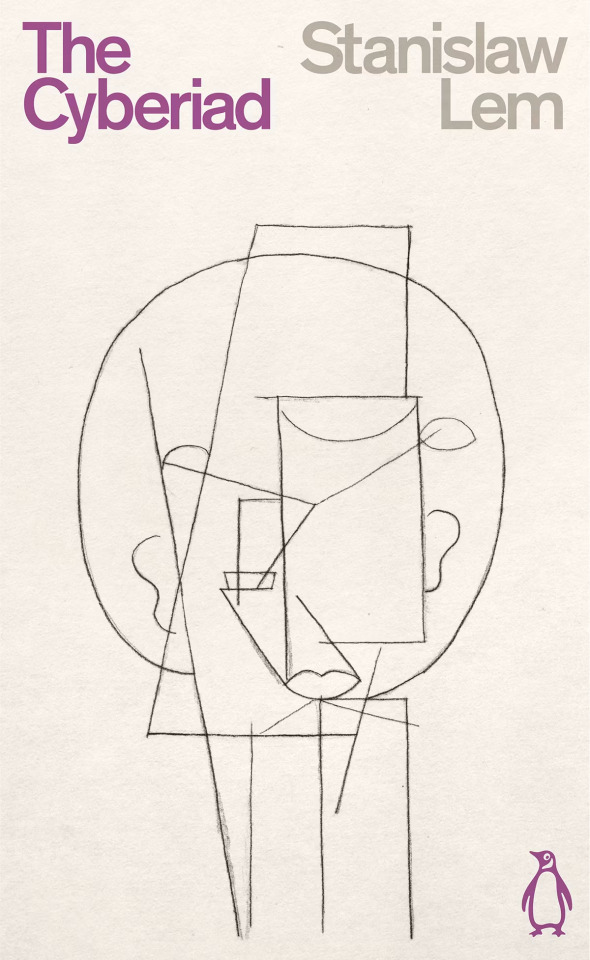
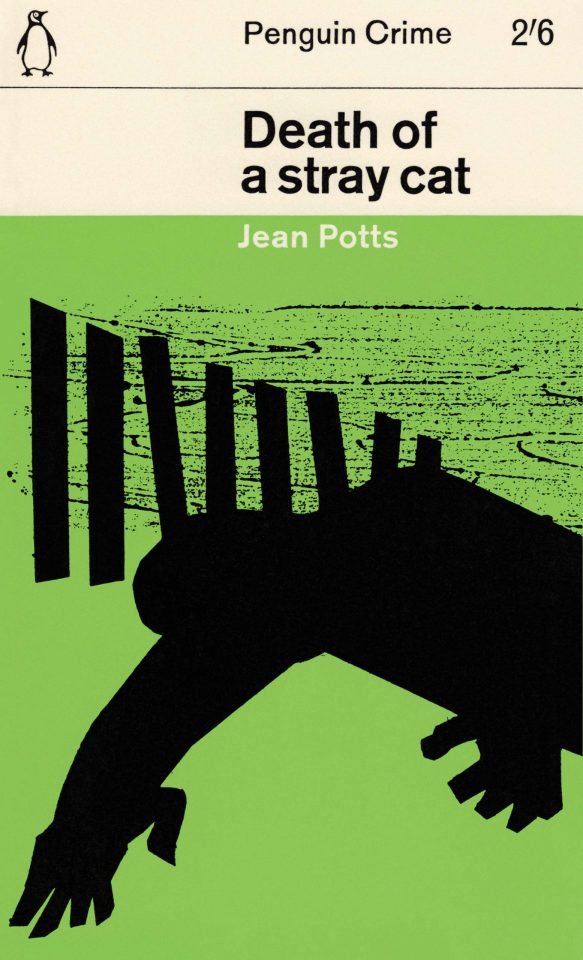
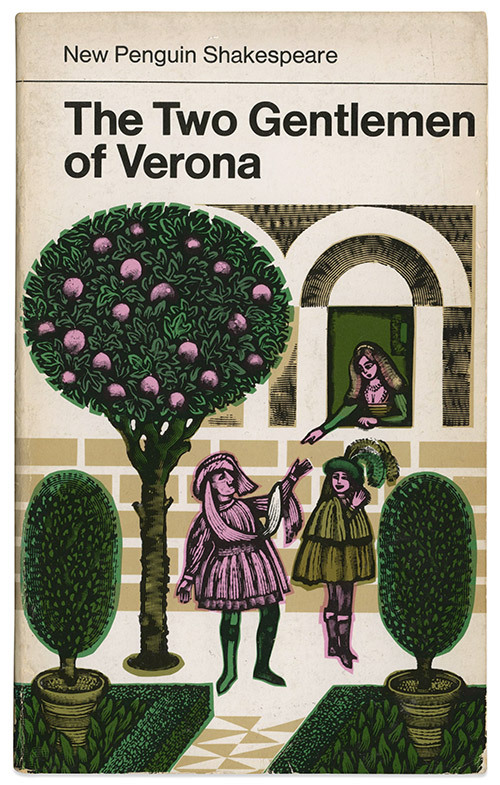
Le choix des illustrations est l’élément qui crée le plus gros contraste avec les couvertures habituelles de science-fiction. En effet les couvertures exubérantes aux couleurs criardes et aux caractères de titrage évoquant l’espace sont remplacés par des illustrations aux traits noirs et fins sur un fond blanc. Jim Stoddart décide de s’éloigner des couvertures de science-fiction typiques du XXe siècle qui semblent aujourd’hui dépassées. L’esthétique sobre de la collection reste néanmoins ancrée dans le genre de la science-fiction en représentant des schémas, des plans, des croquis et autres dessins évoquant des thèmes comme la science, le corps dans l’espace, les mathématiques...
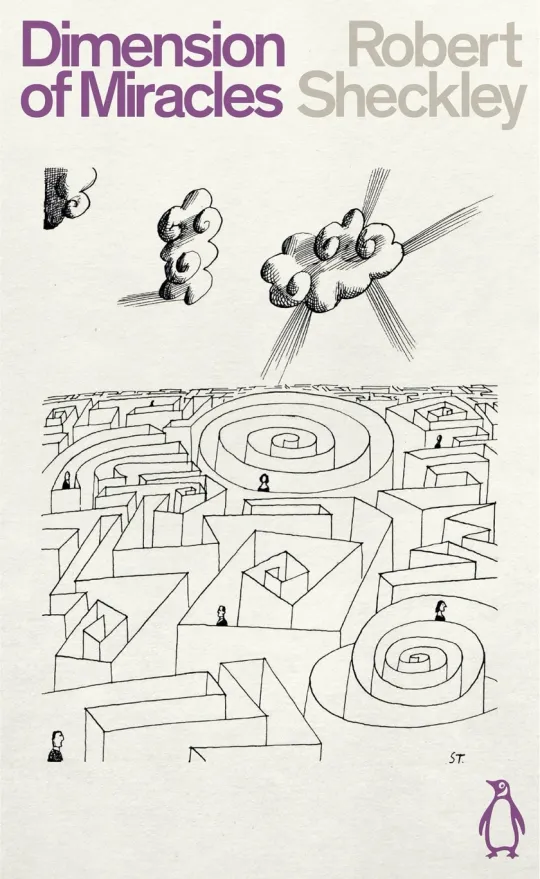

Chaque illustration est réalisée par un maître du modernisme tel que Pablo Picasso, Le Corbusier ou Herbert Bayer et représente une facette de son travail tout en étant en lien avec l’histoire du livre qu’elle illustre. Le choix d’artistes modernistes permet d’illustrer les classiques littéraires grâce à des classiques artistiques et liant le savoir-faire de ces artistes à la collection. Grâce à cette idée Stoddart arrive à apporter une dimension plus sérieuse au genre de la science-fiction et réussis à élever le genre au même niveau que des textes de littérature classique. On peut donc dire que son choix est pertinent car il modernise et rafraîchit l’image associée à la science-fiction.
2 Comment interprétez-vous le choix typographique opéré ici, et la façon dont le caractère est employé dans les couvertures ? Quelle tendance historique du design graphique de telles stratégies semblent-elles convoquer ?
Nous allons maintenant nous intéresser à la partie supérieure des couvertures et notamment au choix typographique fait par Stoddart. Comme dit précédemment la partie supérieure des couvertures contient uniquement le texte et le nom de l’auteur. Le caractère typographique utilisé est le Theinhardt, créé par François Rappo et publié par la fonderie suisse Optimo en 2009. Ce caractère qui évoque l’Akzidenz Grotesk et L'Helvetica suit l’idée de modernité que veut créer Jim Stoddart. Il utilise le même corps et la même graisse du caractère (le medium) pour le titre et le nom de l’auteur. Le corps change seulement d’une couverture à l'autre en fonction de la taille des informations mais la graisse reste la meme.
La distinction entre le titre et le nom de l’auteur se fait uniquement grâce à la justification et à la couleur. Le titre est justifié à gauche et le nom de l’auteur à droite, les deux sont alignés. Ensemble ils rappellent la composition de la collection Penguin Mystery and Crime de Romek Maber avec la présence d’un rectangle blanc pour en haut pour les informations textuelles.
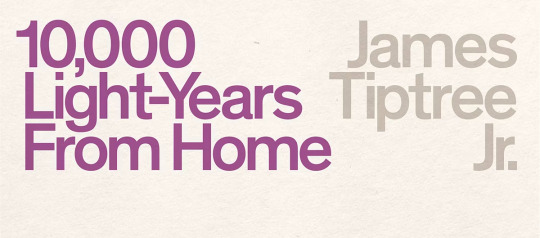
Comme pour beaucoup d’autres collections Penguin, la couleur a une valeur signalétique dans les couvertures. C’est par exemple le cas pour la collection Penguin Mystery and Crime qui est associée au vert ou encore à la collection Pelican Books qui est associée à un bleu vert.Pour les couvertures de la collection Penguin Classics Sci-fi la couleur sert à créer une distinction entre le titre et le nom de l’auteur mais aussi à identifier la collection. Pour la collection de classiques science fiction c’est le violet qui est utilisé en plus du titre on le trouve sur le dos du livre ainsi qu’en bas à droite sur le logo des éditions Penguin. Le violet et la seul couleur utilisée en plus du noir, les noms des auteurs sont écrits en gris afin d’êtres moins visible et de créer une véritable hiérarchie dans la page.
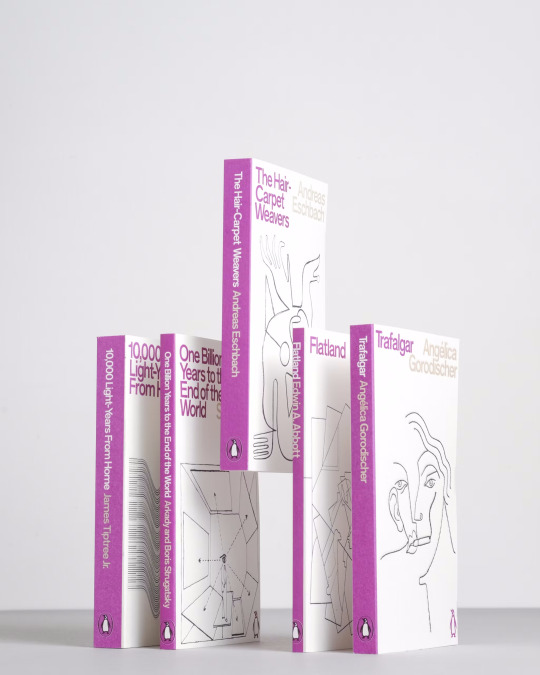
L’utilisation du Theinhardt a avant tout pour but d’être fonctionnel c'est-à-dire lisible et discret pour laisser un maximum d’espace à l'iconographie.
Le choix d'utiliser Theinhardt comme le faisaient les typographes suisse du style international accentue le positionnement de Stoddard et son envie d'élever le genre de la science-fiction en faisant référence à des classiques de la typographie moderniste.
3 Quel semble avoir été le but poursuivi par le directeur artistique en ce qui concerne la perception traditionnelle du genre littéraire concerné par cette collection?
Grâce à sa volonté de faire référence au modernisme autant dans ses choix iconographiques que typographiques, Jim Sottard revalorise et élève le genre de la science-fiction afin qu’il ait la même reconnaissance auprès du public que les autres collections de Penguin. Il apporte un nouveau regard sur la science-fiction et change la perception traditionnelle du public en proposant des couvertures radicalement éloignées de l’esthétique des couvertures utilisées traditionnellement. De plus, il parvient à créer une ligne graphique uniforme qui permet d’identifier immédiatement la collection tout en étant cohérent avec le sujet de la science-fiction.
6403 signes
0 notes
Text
In the worst of America’s Jim Crow era, Black intellectual W.E.B. Du Bois found inspiration and hope in national parks
A view of the Grand Canyon after a snowfall. Tom Stoddart/Getty Images by Thomas S. Bremer, Rhodes College In his collection of essays and poems published in 1920 titled “Darkwater,” W.E.B. Du Bois wrote about his poignant encounter with the beauty of the Grand Canyon, the stupendous chasm in Arizona. As he stood at the canyon’s rim, the towering intellectual and civil rights activist…

View On WordPress
0 notes
Text
Ab Stoddart Catches a Wolf 1970s -- Des and Jean Moore Clippings
Des and Jean Moore Clippings thanks to the Moore gals. The Ottawa Citizen Ottawa, Ontario, Canada Wed, Apr 26, 1978 · Page 84obituary Obituary Stoddart, Elizabeth “Betty”Suddenly at home on Wednesday February 1, 2012 at the age of 71.Loving wife of Joe Kelly. Dear mother of Tammy (Ian Edmison), Kevin (Bobby), Laurie (Doug Morley), and Joanne (Jim Cameron). Proud grandmother of T.J., Abby,…

View On WordPress
#Carleton-Place#Des and Jean Moore Clippings#genealogy#History#Lanark-County#ontario#stoddart#wolf#wolves
0 notes
Photo

Stanislaw Lem: The Star Diaries - Penguin Modern Classics
Cover Illustration: Hayley Warnham Art Direction: Jim Stoddart
#sci fi#books#graphic design#illustration#spacesuits#artists#websites#penguin books#hayley warnham#jim stoddart#stanislaw lem#the star diaries
3 notes
·
View notes
Photo






MRS & MR BRIDGE / Evan S. Connell
Penguin Classics
(text design, typography, typesetting)
#thomas heatherwick#books#book design#Penguin Books#penguin classics#book typography#Typography#jim stoddart#claire mason#caslon#bookstagram#book#booklr#book inspiration#bookinhand
1K notes
·
View notes
Text

My Favourite Spitfire #6 the Mk.VIII
Hush KitJuly 12, 2019
Supermarine Spitfire IMG_6280.jpg
Colour photos: Jim Smith
“My favourite fighter was the Spitfire VIII with clipped wings. It had power and good armament. It could roll quickly and out-turn any enemy fighter we encountered.”
— Robert Bracken, Spitfire, The Canadians

“The Mk VIII lacks the fame of its relatives. It did not fight in the Battle of Britain as did the Mk I and II. It was not built in the greatest numbers; that was the 6,787-fold Mk V. It did not reset the balance against the Focke-Wulf 190 in 1942; that was the immortal Mk IX’s achievement. Yet the Mk VIII deserves attention. As was not uncommon in the tangled Spitfire family, the Mk VIII entered service 13 months after the Mk IX. It was the intended successor to the (rather out performed) Mk V but necessity prompted the very successful interim option of the Mk IX that remained competitive from its introduction in mid 1942 to the end of the war. 308th-spit8.jpg
The Mk VIII was the most advanced Merlin powered Spitfire. It was designed from the start for the two-stage 60-series engine and had a beefed up fuselage structure to handle the increased weight and power. It carried more fuel (leading edge tanks) and had the retractable tail wheel (designed for the Mk III) that cut drag and cleaned up the aft lines.

Later versions featured the bigger fin and rudder (for lateral stability) with a better proportioned outline that the original, rather minimal design. In short, it had the performance of the Mk IX and the best looks of any Spitfire, Merlin or Griffon powered. It was suave, refined and very effective; the finest of the Merlin generation.
Paul Stoddart served in the Royal Air Force as an aerosystems engineer officer and now works for the Ministry of Defence. His interests include air power and military aircraft from the 1940s onward. He is a Fellow of the Royal Aeronautical Society.


7 notes
·
View notes
Photo







Post 0208
Toren Adamcik; Idaho inmate 86328, born 1990, incarceration intake 2007 at age 17, sentenced to life
Murder
In 2011, four years after his conviction; the Idaho Supreme Court finally published that decision roughly 14 months after hearing arguments in Adamcik’s appeal. The High Court upheld Adamcik’s convictions and sentences on both counts.
In all, Adamcik’s attorney, Dennis Benjamin, specified eight different points of concern with Adamcik’s conviction, including the lack of evidence proving he actually stabbed Cassie Stoddart or that any stab wound he may have inflicted was a deadly wound.
Benjamin argued the court erred in denying a motion to suppress statements Adamcik made while in custody, that the jury was not properly instructed, and prosecutors made mistakes in their closing argument at trial. The attorney also challenged the district court’s denial of his post-trial motion for a reduction in sentence because the sentence itself amounted to cruel and unusual punishment, given that Adamcik was just 16 years old when the crime was committed.
Adamcik and another man were convicted in 2007 of the stabbing murder of Cassie Jo, their Pocatello High School classmate, in September of 2006. Both were charged with first-degree murder and conspiracy to commit first-degree murder. Each was convicted on both counts in separate trials.
Both were sentenced to life in prison without parole. Each defendant filed appeals for multiple reasons, which were denied by the Idaho Court of Appeals and subsequently appealed to the state’s top court.
The Idaho Supreme Court’s 63-page decision in Adamcik’s case, written by Justice Jim Jones, the court denied Adamcik’s appeal on all eight arguments. Concurring with Jones were Justice Daniel T. Eismann, and Justice Warren E. Jones.
Justice Roger S. Burdick and Justice Joel D. Horton each dissented in part, while also concurring in part.
Adamcik’s attorney said he was obviously disappointed with the high court’s decision.
2m
Last reviewed June 2025
36 notes
·
View notes
Text
5 Hollywood Celebrities Who Are Zimbabwean.
Danai Gurira is an actress, playwright and a producer who is based in the United State of America (USA) who rose to fame in the early 2000, when she starred in a drama series Law and Order. Danai has been a force to reckon with, producing, directing and starring in many films. She has also won many awards.
Law and Order: Criminal Intent (2004) In the Continuum (2005) The Visitor (2007) Ghost Town (2008) Come and Gone, Life on Mars (2009) 3 Yard, My Soul to Take (2010) Treme, Restless City (2011) The Convert, Treme, The Walking Dead (2012) Mother of George (2013) Familiar (2015) Black Panther (2018)
Tongayi Arnold Chirisa was born on 8 August 1981. After finishing his secondary education, Chirisa graduated with a Diploma in Hotel Management. He graduated also with a Bachelor of Arts Degree in Live Performance at AFDA.
Television Series The Jim Gaffigan Show (2015) Sleepy Hollow (2013) American Horror Story (2012) NCIS Los Angeles (2011) Barack Obama’s Cousin (2010) Redemption (2009) Rough (2009) Crouse (2008) Studio 263 (2003–2005) Films Whitney (2015) Asylum (2012) Mr Bones 2 : Back from the Past (2008) Zimbabwe (2008) Skin (2008) Tanyaradzwa (2004) Blood Covenant (2003) Happiness Is A Four-letter Word (2016)
Chipo Tariro Chung was born on August 17, 1977 and is a Zimbabwean actress and activist based in London. She is of half Zimbabwean and half Chinese descent. Her given name Chipo means “gift” and Tariro means “faith” in the Shona language.
Films and TV series. Absolute Power (1 episode, 2003) as Miriam Proof (2005) as University Friend Sunshine (2007) as Icarus II (voice) Dalziel and Pascoe (2 episodes, 2007) as Layla Jadwin Holby City (1 episode, 2007) as Dr. Nicola Wood The Last Enemy (2 episodes, 2008) as Lucy Fox Doctor Who (2 episodes, 2007–2008) as Chantho and Fortune Teller Doctor Who Confidential (2 episodes, 2007–2008) as Herself Casualty (1 episode, 2009) as Dan Dan National Theatre Live (1 episode, 2009) as Ismene Identity (1 episode, 2010) as Michelle Fielding In the Loop (2009) as Annabelle Hsin Camelot (8 episodes, 2011) as Vivian Sherlock (1 episode, 2012) as presenter Fortitude (2015) as Trish Stoddart A.D. The Bible Continues (2015 miniseries) as Mary Magdalene Thirteen (2016)
Chloe Traicos is a Zimbabwean born actress based in the United States of America. Before she moved to the United States, Chloe lived in Australia where she made the award-winning Indie film ” I Wish I Were Stephanie V” which opened the New York City International Film Festival in 2011, with a special screening outside in Times Square.
MacGyver (2018 US TV Series) Devil’s Cove (2018) The Verdict with Judge Hatchett (2016 -) I Wish I Were Stephanie V (2011) Next Door to the Velinsky’s (2011) Mao’s Last Dancer (2009) A Stranger in my Homeland(2005) Garage Days (2002)
Sibongile Mlambo is a Zimbabwean actress based in the United States. Mlambo has been the face of Nivea campaigns across Africa and is represented by Ice Genetics in Cape Town. In 2007, Mlambo was the second princess in Miss Zim-USA.
Films Honey 3: Dare to Dance (2016) The Last Face (2016) Ladygrey (2016) Message from the King (2016) While You Weren’t Looking (2015) Back to school mom Felix Ants Kini and Adams Almost Half Good Killer Detour TV Series Teen Wolf Homeland Season 4 Mad Dogs Season 3 Jamillah and Aladdin Beaver Falls Season 2 Strike Back Season 3 90 Plein Street Season 4 Stokvel Season 8 America Has Got Talent Season 4 The Apple Side of Life Pearson E, Learning Online W.A.P Pilot Theater Georges Marvelous Medicine Vagina Monologues Great Women in Song Festival Empire State of Mind
- IAMZIMBABWE
1 note
·
View note
Photo

LAST COPIES! The Most Beautiful Swiss Books - The Future Issue / Available at www.draw-down.com / This annual publication showcases the results of the competition “The Most Beautiful Swiss Books,” coordinated by the Swiss Ministry of Culture and aimed at promoting #Swissbookdesign. The Future Issue is the third catalogue in the Back To The FutureTrilogy, which reflects on the past, present and future of book design. With contributions by Susanna Bliggenstorfer, Lionel Bovier, Mercedes Bunz, Hans Burkhardt, Hans ten Doornkaat, Paul Elliman, Experimental Jetset, Matias Faldbakken, Hans-Peter Feldmann, Jesko Fezer, Dominique Gonzalez-Foerster, Will Holder, Richard Hollis, Christophe Keller, Emily King, Aude Lehmann, Jürg Lehni, Beat Mazenauer, NORM, Peter Piller, Martin Schmitt-Lewen, Guy Schraenen, Gerhard Steidl, Erik Steinbrecher, Jim Stoddart, Daniel van der Velden, Daniel B. Visel, Lawrence Weiner, and Gabriel Zaid. Designed by #LaurenzBrunner #Graphicdesign #typography (at Switzerland) https://www.instagram.com/p/BsndFBHA221/?utm_source=ig_tumblr_share&igshid=oe1xmosdr2ts
5 notes
·
View notes
Text
La science-fiction, une littérature peu sérieuse
La maison Penguin Books s’inscrit dans l’histoire de l’édition britannique, une histoire incontournable pour tous les curieux du livre de poche. Cet article n’est pas le lieu où je cherche à cultiver les mots d’auteurs, déjà très nombreux. La reconnaissance suffisamment déployée de la maison d’édition londonienne est pourtant une des raisons spécifiques qui lui permet de tendre vers un design éditorial plus varié sans que cela mette en péril sa réputation. C’est bel et bien l’identité graphique forte de la maison d’édition qui permet au directeur artistique de la collection Penguin Classics Sci-Fi d’exploiter cette liberté. L’approche éditoriale de Jim Stoddart se détache de l’esthétique traditionnelle des éditions Penguin à travers vingt et un titres de Science-fiction et non sans raison ; réajuster un genre littéraire tenu par des idées préconçues, voilà le tour de main dont il fait preuve.
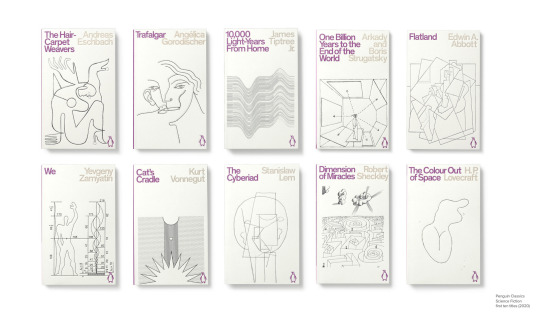
I. Quelle lecture faites-vous du registre iconographique sélectionné pour cette collection ? En quoi vous semble-t-il pertinent dans un tel contexte ?
Le design de la collection Penguin Classics Sci-Fi opte pour mettre l’iconographie au premier plan. Déjà vu, me direz-vous. Il est vrai que la maison d’édition a déjà fait usage d’une intention similaire, notamment avec sa collection Penguin Great Loves. Le directeur artistique Jim Stoddart s’empare d’une stratégie éditoriale ayant déjà fait ses preuves auparavant. Pour chacun des titres, l’iconographie occupe ¾ de l’espace de la couverture, comme l’avait initié le graphiste britannique Romek Marber. Mais son intention va encore plus loin. En faisant usage du trait, il propose un répertoire d’œuvres des maîtres de l’art qui mettent à mal l’esthétique de la science-fiction traditionnelle. Ce registre iconographique est sélectionné non pas sans lien avec le contenu du livre de science-fiction, bien qu’il ne soit pas évident du premier coup d’œil. En effet, chaque œuvre d’art moderne explore des réalités fictives par leur interprétation du monde réel en lien étroit avec la littérature de science-fiction.
Quoi qu’on en dise, les couvertures de livres de science-fiction ont tendance à être associées à une esthétique bien plus exubérante et colorée. Penguin Classics Sci-Fi est bien plus sobre et mesurée. C’est d’ailleurs ce choix graphique qui permet aux ouvrages d’être individuellement associés à la même collection. En revanche, on reconnaît légèrement l’esthétique du livre de science-fiction par ce traitement du trait. Les couvertures nous évoquent des schémas qui font échos aux mathématiques et aux sciences. Puisque la représentation de l’espace-temps est indéniablement liée au genre littéraire de la science-fiction, Jim stoddart s’empare de cette mécanique. Par la sélection iconographique qu’il nous livre, il nous offre aussi un voyage entre différentes temporalités : des classiques littéraires plus récents aux œuvres de l’histoire de l’art datées. Alors ce ne sont effectivement pas des images futuristes peu digestes qui nous sont habituelles, mais ces iconographies font bien échos au livre de science-fiction.
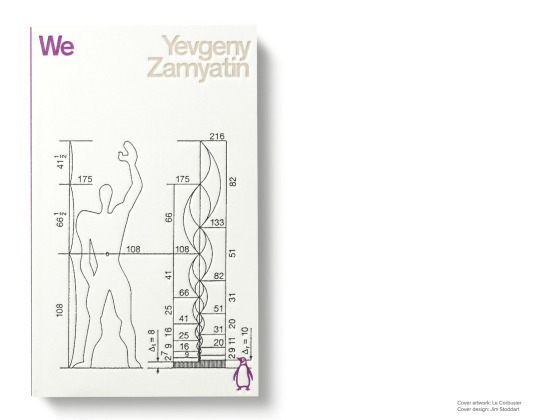
II. Comment interprétez-vous le choix typographique opéré ici, et la façon dont le caractère est employé dans les couvertures ? Quelle tendance historique du design graphique de telles stratégies semblent-elles convoquer ?
Le choix du caractère typographique Theinhardt, dessiné par François Rappo parle d’une intention, celle de réinvestir les codes de l’école du Bauhaus et des praticiens de l’école de Zürich. Les tentatives de composition, avec une présence majeure de l’iconographie, trouvent leur origine en Suisse. À la recherche d’une neutralité pourtant utopique, Jim stoddart s’empare alors des expérimentations de ces prédécesseurs. Il opte pour un caractère typographique sans serif qu’il emploi en une seule graisse et avec le même corps de texte. Attendiez-vous à des lettres complètement fantaisistes ? Ce n’est pas le cas. Loin des caractères fantasques traditionnellement présents sur le design des couvertures de sciences-fictions, le Theinhardt ne présente pas de relation directe avec le thème de la collection.

Publié par la fonderie Optimo en 2009, le caractère combine fonctionnalité et clarté de sorte à répondre aux besoins contemporains qu’exige le design de collection. Dès le départ, l’idée est de rendre le caractère lisible et discret. L’utilisation de la couleur est un autre moyen de produire un effet d’unification de ces titres. Auparavant, Penguin Books s’est servi de cet outil pour identifier certaines collections, comme avec l’application du orange pour la collection Fiction. Cette fois-ci, le directeur artistique fait usage du violet pour les titres qui sont justifiés à gauche, le logotype ainsi que le dos de l’ouvrage. Cet élément monochrome agit comme un signe qui permet au lecteur de faire correspondre le roman à la collection Penguin Classics Sci-Fi. Les noms d’auteurs sont imprimés dans un gris chaud et justifiés à droite pour parvenir au lecteur plus tardivement. Visiblement, ces livres de poche convoquent la tendance suisse pour laquelle l’image est un matériau à privilégier et le caractère le moyen de transmettre l’information.
III. Quel semble avoir été le but poursuivi par le directeur artistique en ce qui concerne la perception traditionnelle du genre littéraire concerné par cette collection?
Bien que la maison Penguin Books soit indéniablement associée à des œuvres littéraires de grande qualité et d'une valeur culturelle certaine, la science-fiction reste un genre dévalué. Jim Stoddart cherche à célébrer les classiques de ce genre littéraire en lui attribuant une nouvelle image. En tout état de cause, la science-fiction grand public est associée à une imagerie extravagante qui la rend peu sérieuse. De ce fait, le directeur artistique a conçu la collection avec l’intention de changer la perception traditionnelle de la science-fiction comme un genre littéraire de divertissement. L’iconographie est donc le moyen de rendre la science-fiction légitime, en l’associant à l’histoire de l’art. Ces dessins au traits laissent beaucoup plus d’espace au blanc et à l’imagination de ses lecteurs. Ces livres de poche remettent en question les idées préconçues liées à la perception traditionnelle de ce genre littéraire tout en honorant les grands classiques du genre. Un tour de main réussi. Non seulement Jim Stoddart est parvenu à la conception d’une unité graphique de collection, mais aussi, il offre un regard nouveau sur ce genre littéraire en rendant justice à l’écriture de science-fiction.
1 note
·
View note
Text
Great Ideas collection of Penguin Books: When typography becomes illustrative by references
When you look at the covers of the Penguin Books “Great Ideas” collection, you see typefaces. When I look at the covers of the Penguin Books “Great Ideas” collection, I see allusions, references, pastiches.
When the young graphic designer David Pearson was commissioned to make the covers of this collection of books, while he was at the interior layout department, he participated to re-emerge Penguin Books as a strong and identifiable brand. For this first series of twenty books by radical thinkers throughout history that are supposed to have changed the world, Pearson had the brilliant idea to make typographic covers. No boring illustrations, thank you Pearson.
Because Jim Stoddart, the artistic director of Penguin Books, had imposed that each cover should contain title, author name and a key quote from the texts, Pearson explained that “It seemed obvious to go straight to the text for inspiration and let the flavor of the writing directly influence the look of the cover”. Having the idea is good. Having the means is even better. However, Pearson had not listened too much to his courses in the history of typography a few years earlier. He decided to hire Alistair Hall, an ex-student, and Catherine Dixon and Phil Baines, their former tutors at Central St Martins, who have an important culture and many references in mind.
The two important things in these covers are typefaces and references. References are more or less explicit or abstract. For example, the cover of Seneca by Phil Baines seems to be a good cover. Because Seneca is the most famous representative of ancient Stoic philosophy, Baines decided to make a centred arrangement with a sans serif typeface which reflects early carved inscriptions of Antiquity. He referred to the ancient inscription but the use of a a sans serif typeface allows him not to make a simple pastiche. The cover of The Communist Manifesto (1848) of Marx and Engels by Pearson is also interesting because he only used the flush-left with a sans serif typeface. In contrast, the cover of The Christians and the Fall of Rome of Edward Ribbon is a pastiche from the title page of the Baskerville’s Holy Bible. According to the references and the typographical treatment and composition, the covers are more or less successful.
Going back to typographic covers that once defined Penguin Books is not nostalgic. An illustration would have been just superfluous and irrelevant for a collection like Great Ideas. The period very different of each book is neatly referenced in the choice of typeface or lettering, and in the layout. The power of typography is to illustrate itself through itself, and also demonstrates the power of words. Pearson also shows here that the covers, even if they are treated individually because of a different typeface or lettering for each, form a collection. And what a collection!
2 391 signs

Penguin Books, Great Ideas, Vol. I, 2004, Art Direction: Jim Stoddart, Design: David Pearson, Phil Baines, Catherine Dixon and Alistair Hall.
0 notes
Photo

A very happy birthday to Jim Moir, aka Vic Reeves, a frighteningly talented artist, comedian, actor and musician, born 24 January 1958. From a photo by John Stoddart taken in 1991. #vicreeves #jimmoir #thewonderstuff #reevesandmortimer #onthisdayinmusic #artonpaper #brushpen #watercolour (at Leeds West Yorkshire) https://www.instagram.com/p/CZF0YCQsh5N/?utm_medium=tumblr
#vicreeves#jimmoir#thewonderstuff#reevesandmortimer#onthisdayinmusic#artonpaper#brushpen#watercolour
0 notes


